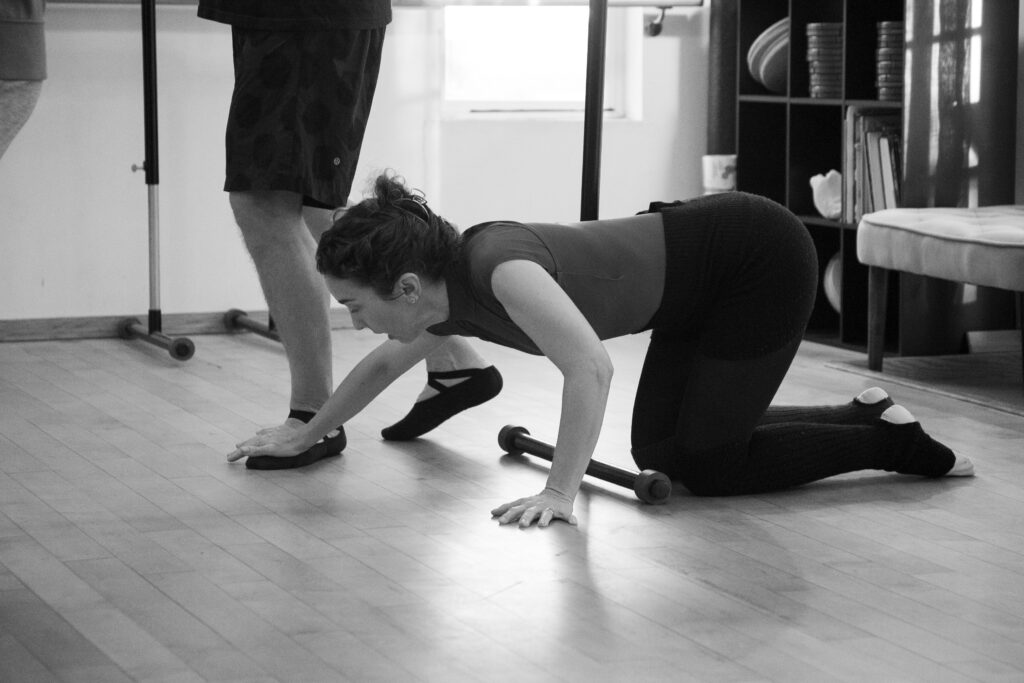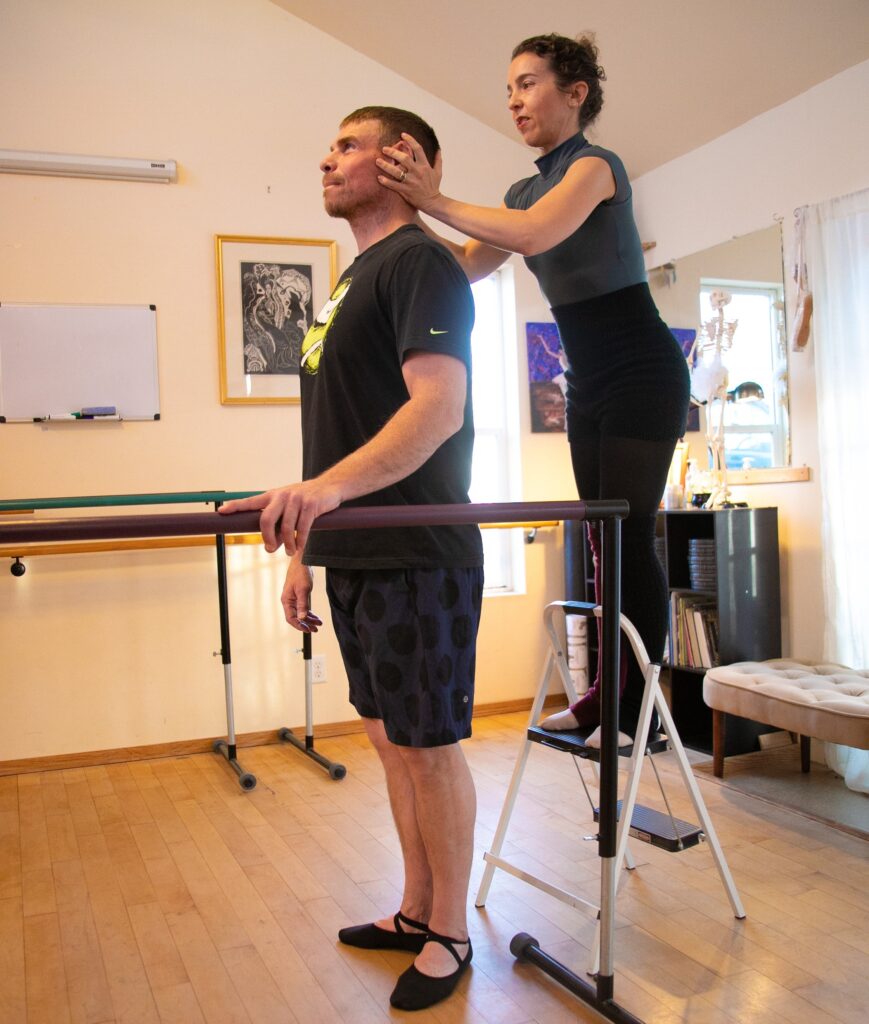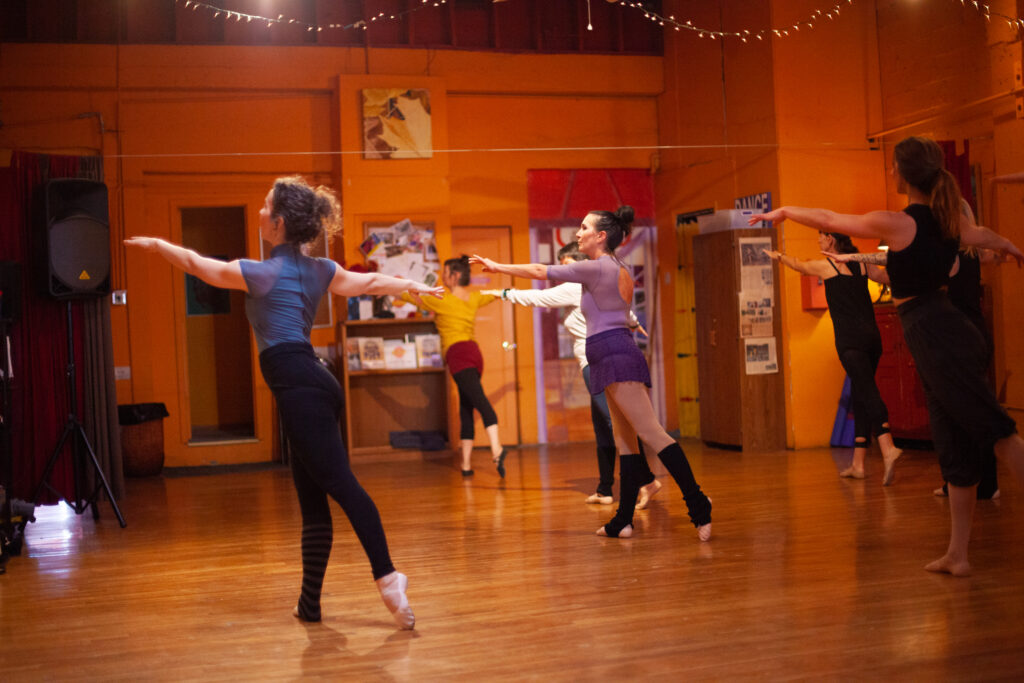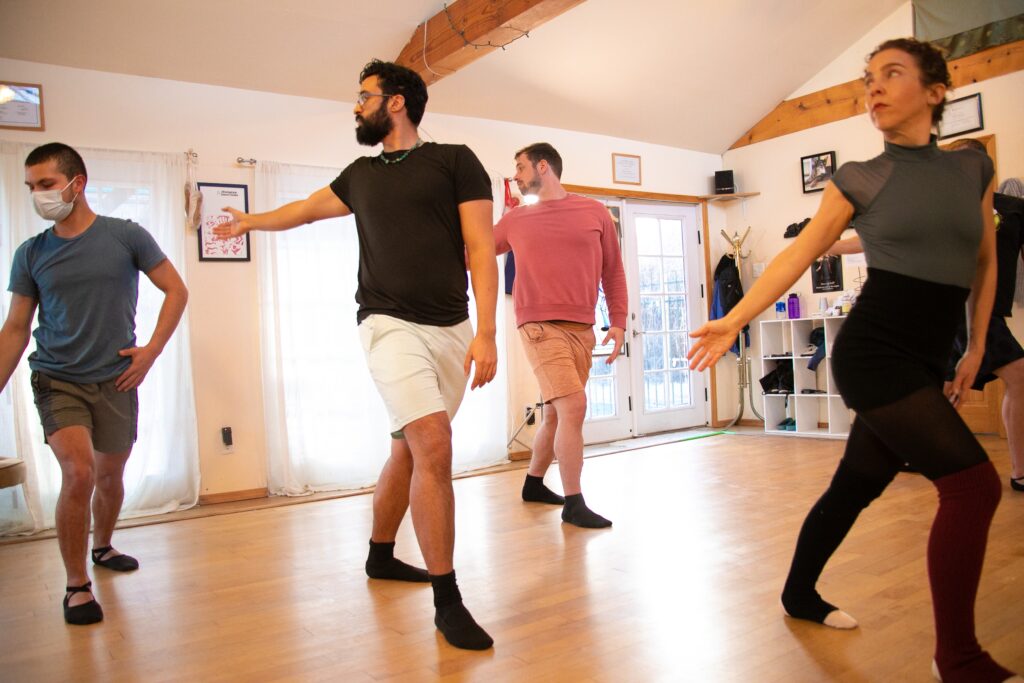Making Ballet Accessible to Adult Learners
An Interview with Bianca Starr of Bianca Lily Ballet
BY EMMALY WIEDERHOLT
Bianca Starr is the owner of Bianca Lily Ballet, a ballet school in Albuquerque, NM that specializes in teaching ballet to adults who are absolute beginners. Here, she shares how she creates a more inviting and accessible environment to adult learners by departing from the traditional ballet class format, how she cultivates openness and vulnerability in her classes, and why traditional ballet environments can be not only intimidating but counterproductive to adults seeking to learn and enjoy ballet.

Photo by Colton Dean
~~
Can you share a little about your own dance history and what shaped you as a dancer and teacher?
I started ballet at about seven years old in the Denver metro area. At the time, I wanted to do gymnastics, but the ballet school was closer, so my mom told me I had to try it for three months. One day I asked my mom how long it had been and she said “it’s been six” so I kept going.
What shaped me a lot as a dancer was when I turned 10, I got promoted into class with Christina Noel-Adcock. The coddling was over. She wasn’t unkind, but she was down to business. She focused on alignment and technique. Christina shaped me because of who she was: a third-generation ballet dancer and a ballet dancer of color. She came of age in the late 70s and 80s. At the time, everyone wanted the tall thin white look. She was 5”1, muscular, and brown. But she said, “Just watch me.” And she went on to have a 15-year career and was principal dancer with Colorado Ballet.
After high school I went the academic route, as I didn’t think I was good enough to get into a company. My program at Randolph-Macon Women’s College had an auspicious modern dance program, but not great ballet. The program was founded by Helen McGehee, who was one of Martha Graham’s soloists. It was there that I got a great modern dance education, and also an understanding of how special the ballet education I had received was.
How did you come to found Bianca Lily Ballet?
I moved to Albuquerque in 2004 for a job. I left dance for a while. I think this happens for a lot of dancers: when it doesn’t work out professionally, it’s like your heart can’t take it and you distance yourself from dance. But eventually I got interested in Argentine tango. And like many who get into tango, I became addicted and obsessed. We used to have a huge tango scene in Albuquerque, and I was assistant director of the tango festival for nine years. Originally, I thought I would be teaching tango. It brought me back into the ballet studio, and I’d hear Christina’s voice in my head talking me through class. Somehow I had cataloged all of these cues and instructions, and some I understood much better as an adult than as a teenager. I thought I was going to teach ballet to tango dancers as cross training; I had such a huge advantage coming into tango because of my previous ballet training. On a whim, I signed up for Finis Jhung’s adult ballet teacher training. He’s out of New York, and he was one of the adopters of the idea that we need to reevaluate how we’re teaching ballet so it works on different bodies. I had a lightbulb moment while I was there and when I came home, I decided to host a six-week course. I started teaching in 2010. I discovered I have a passion and a talent for teaching ballet to people with no ballet background whatsoever.

Photo by Colton Dean
How is Bianca Lily Ballet organized in terms of what the classes look like and who they are geared towards?
When I first started teaching, I understood that a lot of adult beginning ballet classes aren’t for beginners who have never studied ballet before. It’s hard for people who grew up dancing to understand the limitations people have when they first show up not just in terms of strength and flexibility but also in terms of neurological capacity and somatic awareness. If you try to teach a beginner a traditional ballet class, it’s too much on their first day. I learned a lot about how to teach adults watching people leave class crying when other people were teaching because the experience of a traditionally formatted ballet class was too overwhelming. You can’t give ballet on the first day. It’s a process. You have to work up to it. If it’s a drop-in class, it’s not for absolute beginners.
My class is geared for anyone who can walk into the studio by their own power, which I acknowledge is a limitation. On day one we start with a lot of talking to get to know each other and work on standing up straight, and then we add. I also want to give people the joy of ballet. There are times when we talk about technique and activating muscles, and other times we just enjoy. I don’t have a specific target demographic; I have a very diverse client population. My clients have ranged over the years from age 17 to 74. I have people from all different racial and ethnic backgrounds. I’ve had people from all walks of life, including a diesel mechanic, two retired cops, surgeons, nurses, and construction workers. I have a fair number of straight men, which is interesting from the standpoint that ballet is not a space they typically feel invited.
The thing that helps me make people feel welcome is twofold. I understand what has to happen to build them up neurologically to have the capacity to do ballet. But the other is that the thing that brings almost all adult beginners into the studio is heartbreak. Most adults who show up to ballet as a beginner are showing up because they are looking for something. Functional adults are good at hiding their anxieties. They’ll put on a brave face, though sometimes they’ll tell me that they are going through stuff. They are trying something new, and it’s a vulnerable process. And if I succeed at making them feel welcome, it’s not unusual for them to open up after a few months and let me know they came to ballet because they were going through a divorce, or a miscarriage, or an illness. Because I’ve been teaching for a long time, it now feels like a safe assumption that many of my students who walk through the studio door for the first time are going through something.
How do you modify ballet technique so it’s approachable for beginning adults?
I often tell teachers I’m training that you have to put on time warp goggles. When you get it right, it’s going to feel too slow and repetitive. The students’ experience of time and movement is different than someone who has been dancing their whole life. It means over explaining and picking just a few things at a time to focus on. For the first six weeks, we don’t use port de bras, leaving hands on hips. Just holding the alignment and learning the steps is enough. We add the arms in part II of the class.
You have to give them a balance between an improvement process and challenge to avoid them feeling despair and quitting. All my classes start with a floor warm up to help build somatic awareness. It serves to psychologically and emotionally make them present as well as to stop and think about their bodies. Most people are never asked to do this.
At the end of class, we have what I call fancy dancy reverence where we do fancy port de bras and I put on schmaltzy ballet music and we take a bow and there’s not a lot of focus on doing it right. That makes them giggle.

Photo by Andrés Salazar and Ryan del Rosario
What happens after that six-week absolute beginner class?
My program is comprised of six weeks part I and six weeks part II. In three months, we build up to a full ballet class: warmup, barre, center, across the floor, jumping. After three months, students can go into my ongoing class program. I’m proud that we have rather robust stratified levels. People come in through the intro courses, and then we have ongoing novice, intermediate, and advanced classes. When you go to other studios, the difference between beginning and advanced isn’t that different, but our novice classes are very different from advanced classes. We try to maintain the stratification so people get a chance to work at the level they need to. It gives the students a chance to aspire to something. Likewise, they get excited when the more advanced students take a lower-level class. A lot of our advanced students are really supportive of the beginning classes because a lot of them started in my program.
I like a chatty ballet class; people don’t understand how important that is for the adult learner. There’s a real advantage to having students feel comfortable to speak in class, because they can address doubts, bolster one another, and express frustration or confusion. It’s not unusual for folks to be talking and laughing before class, and that bonding is really important. We take our dancing seriously, but we don’t take ourselves seriously.
What is the most difficult obstacle to working with adults?
Teaching dance is an incredibly intimate and vulnerable activity, and one of the things I’ve been most successful at is making people feel safe. Once you do that successfully, sometimes things happen. Sometimes people might cry in a class. Not because they had a negative experience, but because they are going through something and getting in their bodies for the first time. As soon as they start to cry, they have a sense of shame. I tell them, “What’s happening isn’t unusual. It’s totally understandable. You’re going through something and you’re among friends.”
The other thing that is a challenge for people who teach adult ballet are the different modifications. There’s a lot to be learned from modifications. Adult bodies often aren’t in great shape. A lot of people come in specifically because they are seeking exercise. I’ve had people who are in recovery from health trauma. I love this part of the job because it is creative problem solving.
What changes would you like to see in the ballet world?
The biggest challenge is that the ballet class format is considered immutable, and it can be a very stern and cold environment. Children are a captive audience – their parents have enrolled them – but adults can get out their car keys and leave, possibly before the class is done. There are lots of perfectly nice people in ballet who are acclimated to the culture of ballet. They don’t realize that it’s a detractor for a new adult student.
I think a lot of studios have figured out that you can’t expect adults to wear the same clothing as children. But I don’t know if they’ve extrapolated that to the experience of welcoming adults into the studio. I definitely have adults who are returning to ballet, and maybe they had a great experience or bad experience. For those people, I have to reset their expectations so that they’re not so hard on themselves: “Yes, you can do this, and try to be loving with yourself.” It’s back to managing the psychology.
What does success look like for you and your students?
When I walk into a class and the students are all talking and laughing and I have to quiet the room because they are having such a good time, it’s a moment of success. They have bonded in a way that will support them in their ballet experience and in their personal lives as well.
In my classes, we don’t turn for the first six months. I spend a lot of time preparing the students for things they don’t realize they are being prepared for. When we get to pique turns, for example, it’s so fulfilling.
Every few years, I produce a show. Last year was “Ted and Bill’s Excellent Adventure.” I love to see them perform after months of dedication and preparation and get so much from it. They were all terrified at first, but they were so proud when it was done. No one was required to perform, but to see them volunteer and have an experience they weren’t sure they were going to have but had the courage to try is a sign of success.
Anything else?
Recently I’ve been doing a class called “butch ballet for dudes.” I’ve had a certain amount of success teaching guys who are not conventionally welcome in ballet. Some of them are gay, but a lot of them are straight. A lot of them are big buys. The reason I think I’ve had success is because I lean into teaching them masculine styling in ballet. I think it’s important to facilitate this kind of class because these guys are trying to be the types of men we want to see in the world. Learning dance is incredibly vulnerable as an adult. To have men engaging in that level of vulnerability has positive effects outside the studio. Men can of course take all my other classes, but we come together to feel that sense of fraternity and bolster their confidence to participate in ballet.

Photo by Colton Dean
~~
To learn more, visit www.biancalily.com.

2 Responses to “Making Ballet Accessible to Adult Learners”
What a great idea, Jimmy! Glad to hear you’re inspired and wishing you luck getting a Horton Technique Fundamentals class going:)
Thank u for this interview. At one time in my area there was a community of Adults in Ballet and Modern Dance Classes from absolute Beginners to Adults that have had Training but do other Careers. I’d like to Teach Horton Technique Fundamentals for Adults in this Jersey Shore small Town that I’m in. Reading this Interview feeds my Vision.
Comments are closed.